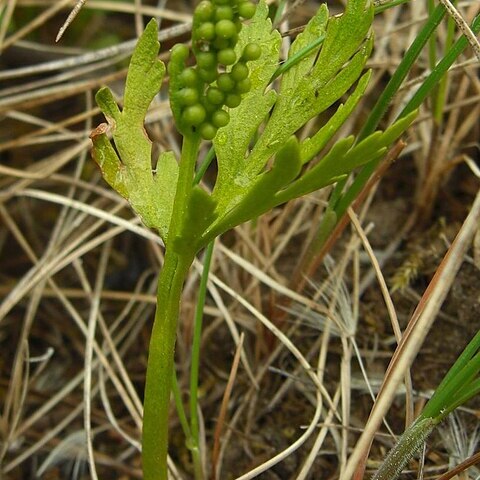Rhizomes shortly cylindrical, annually producing 1 frond 5-20 cm tall. Common stipe green, 4-15 cm. Sterile lamina subternate, 2-pinnatifid, medium green to yellow-green, somewhat shiny, broadly ovate-deltoid, 1-4 × 1-3 cm; pinnae lanceolate, up to 1 cm wide, deeply pinnatifid, apex acute; upper pinnae and segments of basal pinnae oblong, up to 2 cm wide; veins pinnate, free. Sporophore arising at top of common stipe, narrowly deltoid, 1-6 cm, 2-pinnate; sporangia exposed and not immersed, mostly approximate or slightly separated and covering midrib of pinnae. Spore surface tuberculate to irregularly verrucose. 2n = 90.
Trophophore stalk 0--1 mm; blade dull to shiny green to dark green, deltate, 1--2-pinnate, to 6 × 7 cm. Pinnae to 5 pairs, ascending, approximate, distance between 1st and 2d pinnae not or slightly more than between 2d and 3d pairs, linear to broadly lanceolate, entire to divided to tip, margins with distinct lobes or segments, apex acute to rounded, venation pinnate. Sporophores 1--3-pinnate, 1--2.5 times length of trophophore, divided into several equally long branches (all other botrychiums have a single stalk or 1 dominant and 2 smaller). 2 n =90.

